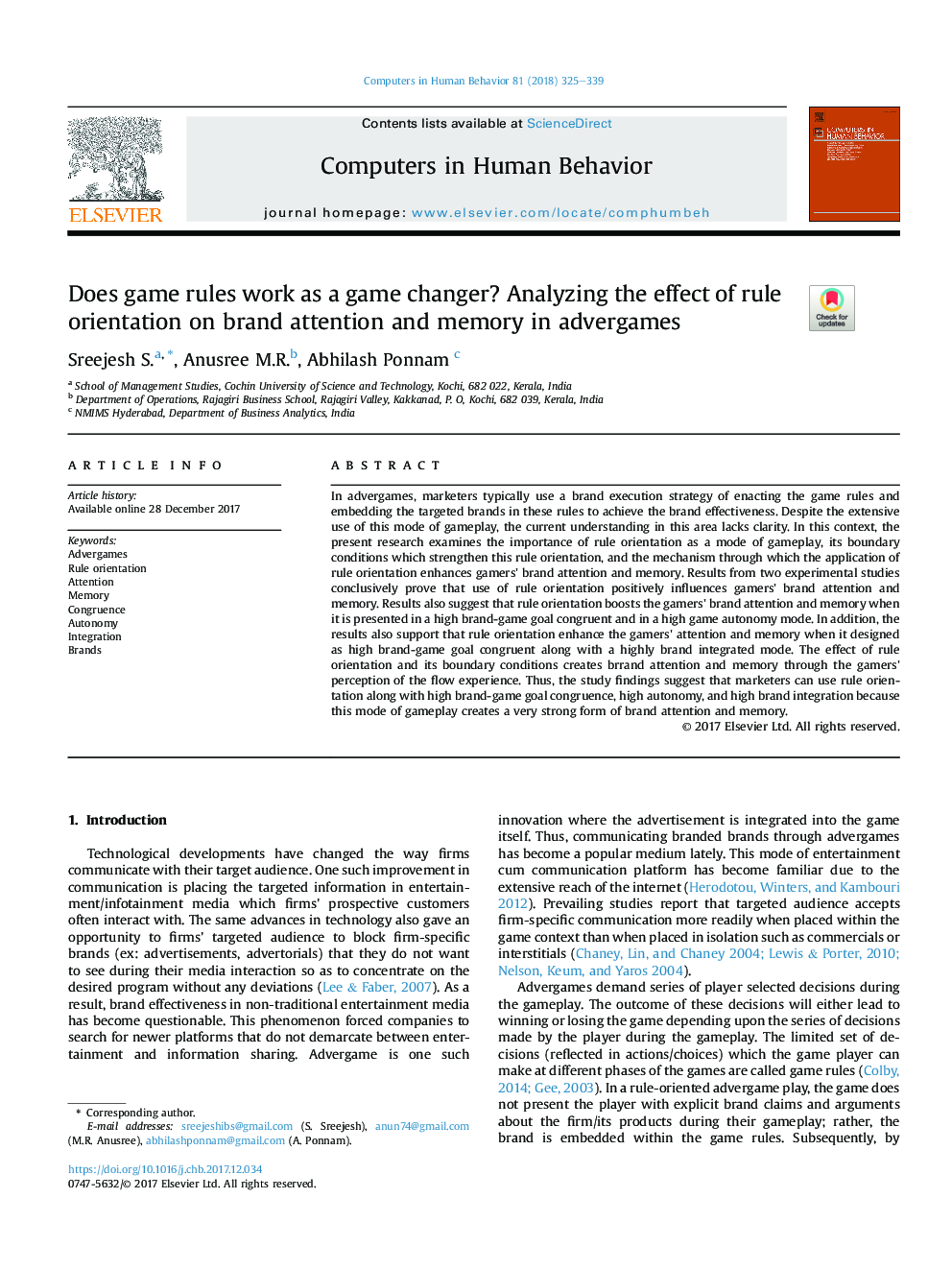| Article ID | Journal | Published Year | Pages | File Type |
|---|---|---|---|---|
| 6836285 | Computers in Human Behavior | 2018 | 15 Pages |
Abstract
In advergames, marketers typically use a brand execution strategy of enacting the game rules and embedding the targeted brands in these rules to achieve the brand effectiveness. Despite the extensive use of this mode of gameplay, the current understanding in this area lacks clarity. In this context, the present research examines the importance of rule orientation as a mode of gameplay, its boundary conditions which strengthen this rule orientation, and the mechanism through which the application of rule orientation enhances gamers' brand attention and memory. Results from two experimental studies conclusively prove that use of rule orientation positively influences gamers' brand attention and memory. Results also suggest that rule orientation boosts the gamers' brand attention and memory when it is presented in a high brand-game goal congruent and in a high game autonomy mode. In addition, the results also support that rule orientation enhance the gamers' attention and memory when it designed as high brand-game goal congruent along with a highly brand integrated mode. The effect of rule orientation and its boundary conditions creates brrand attention and memory through the gamers' perception of the flow experience. Thus, the study findings suggest that marketers can use rule orientation along with high brand-game goal congruence, high autonomy, and high brand integration because this mode of gameplay creates a very strong form of brand attention and memory.
Related Topics
Physical Sciences and Engineering
Computer Science
Computer Science Applications
Authors
Sreejesh S., Anusree M.R., Abhilash Ponnam,
